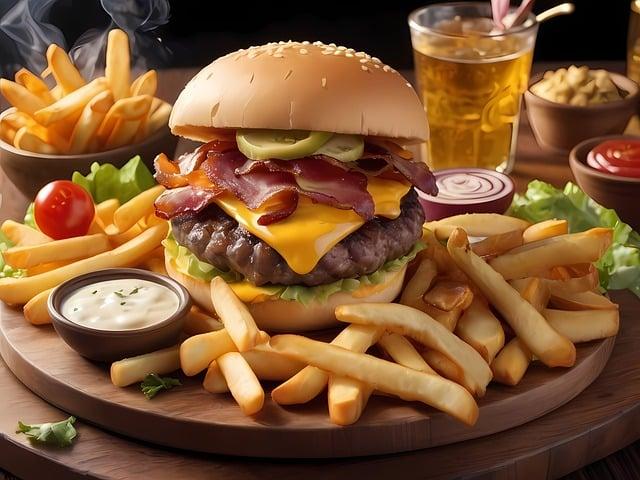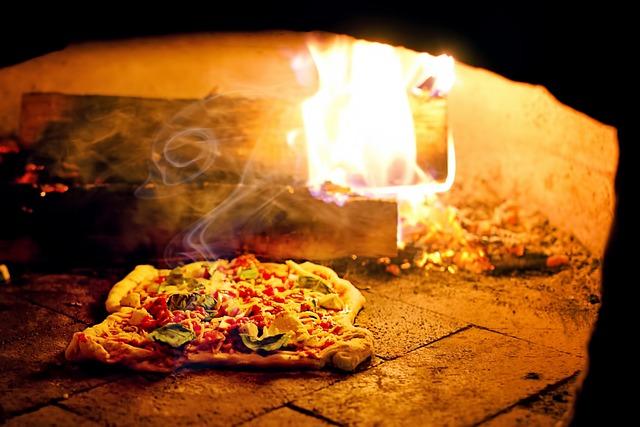In a quaint Parisian patisserie, the air was thick with the sweet scent of butter and sugar. A young girl named Claire watched in awe as the baker crafted delicate éclairs, their glossy chocolate glaze shimmering like a midnight sky. Nearby, golden croissants puffed in the oven, their flaky layers whispering secrets of early mornings. Tarts filled with vibrant fruits and creamy custards lined the shelves, each a masterpiece. As Claire savored a bite of a buttery mille-feuille, she realized these classic French pastries were not just desserts; they were stories of tradition, love, and artistry, waiting to be shared.
Table of Contents
- Exploring the Timeless Elegance of French Pastries
- A Journey Through Iconic Flavors and Textures
- Mastering the Art of Pastry: Techniques and Tips
- Where to Find Authentic French Pastries Around the World
- Q&A

Exploring the Timeless Elegance of French Pastries
French pastries are a celebration of artistry and tradition, each bite offering a glimpse into the rich culinary heritage of France. From the delicate layers of a croissant to the intricate designs of a macaron, these treats are not just desserts; they are a testament to the skill and passion of French patissiers. The flaky, buttery texture of a well-made croissant is a morning ritual for many, while the vibrant colors and flavors of macarons make them a favorite for special occasions. Other classics, such as the éclair and tarte Tatin, showcase the versatility of pastry dough, filled with luscious creams or topped with caramelized fruits, inviting indulgence with every mouthful.
Beyond their exquisite taste, these pastries tell stories of regional influences and seasonal ingredients. The choux pastry, for instance, serves as the foundation for both éclairs and profiteroles, demonstrating the adaptability of this simple dough. Meanwhile, the financier, a small almond cake, reflects the elegance of French baking with its moist crumb and golden crust. Each pastry is a work of art, often adorned with delicate glazes or fresh fruits, making them not only delicious but visually stunning. As you explore the world of French pastries, you’ll discover that each creation is steeped in history, inviting you to savor the timeless elegance that has captivated palates for generations.

A Journey Through Iconic Flavors and Textures
Embarking on a culinary adventure through the world of classic French pastries is akin to wandering through a vibrant gallery of flavors and textures. Each pastry tells a story, inviting you to savor its unique character. From the delicate layers of a croissant, with its buttery, flaky exterior that gives way to a soft, airy interior, to the rich, creamy indulgence of a éclair, filled with velvety pastry cream and topped with a glossy chocolate glaze, every bite is a celebration of craftsmanship. The macaron, with its crisp shell and chewy center, offers a delightful contrast of textures, while the tarte Tatin presents a harmonious blend of caramelized fruit and buttery pastry, creating a symphony of sweetness and tartness.
As you delve deeper into this world, the mille-feuille stands out with its layers of puff pastry and luscious cream, each forkful revealing a new dimension of flavor. The financier, a small almond cake, boasts a moist crumb and a nutty aroma that lingers on the palate, while the choux pastry serves as the foundation for a variety of delights, from cream puffs to the decadent profiterole. Each pastry not only showcases the artistry of French baking but also invites you to experience the intricate dance of flavors and textures that define this timeless culinary tradition.

Mastering the Art of Pastry: Techniques and Tips
French pastry is a realm of culinary artistry, where each creation tells a story of tradition and technique. Among the most celebrated classics, you’ll find the croissant, a flaky, buttery delight that embodies the essence of breakfast in France. The secret to its irresistible texture lies in the meticulous process of laminating dough, which involves folding layers of butter into the dough multiple times. Another iconic treat is the éclair, a choux pastry filled with rich cream and topped with glossy chocolate. Mastering the art of choux pastry is essential, as it serves as the foundation for various pastries, including the delicate profiterole and the elegant Paris-Brest.
Venturing further into the world of French pastries, one cannot overlook the tarte Tatin, a caramelized upside-down apple tart that showcases the beauty of simplicity. The balance of sweet and tart flavors, combined with a perfectly baked crust, makes it a timeless favorite. Additionally, the macaron has gained international fame for its vibrant colors and diverse flavors, requiring precision in technique to achieve that signature crisp shell and chewy interior. Each of these pastries not only delights the palate but also invites bakers to explore the intricate techniques that define French patisserie, making it a rewarding journey for any culinary enthusiast.

Where to Find Authentic French Pastries Around the World
For those on a quest to indulge in authentic French pastries, the journey can be as delightful as the treats themselves. Major cities around the globe boast patisseries that capture the essence of French baking. In Paris, the heart of pastry culture, iconic establishments like La Pâtisserie des Rêves and Pierre Hermé offer exquisite macarons and éclairs that transport you straight to the streets of France. Meanwhile, in New York City, you can find a slice of Paris at Dominique Ansel Bakery, famous for its inventive takes on classic pastries, including the beloved Cronut. Other cities, such as Tokyo and Melbourne, have also embraced French pastry culture, with local favorites like Sadaharu Aoki and La Tropezienne serving up delicate creations that honor traditional techniques.
Exploring beyond the major metropolitan areas can yield hidden gems as well. In San Francisco, Choux Bakery specializes in the airy delight of choux pastry, while Toronto offers a taste of France at Petit Four, where you can savor buttery croissants and rich tarts. For those venturing to London, Paul and Ladurée are must-visit spots for their classic French offerings, including the ever-popular tarte au citron and pain au chocolat. No matter where you are in the world, the allure of authentic French pastries is just a bite away, waiting to be discovered in charming bakeries and bustling cafés alike.
Q&A
-
What are the most famous classic French pastries?
Some of the most renowned classic French pastries include:
- Croissant: A buttery, flaky pastry known for its crescent shape.
- Eclair: A choux pastry filled with cream and topped with chocolate icing.
- Tarte Tatin: An upside-down caramelized apple tart.
- Macaron: A delicate meringue-based confection with a creamy filling.
-
What is the difference between a pastry and a dessert?
While all pastries can be considered desserts, not all desserts are pastries. Pastries are typically made from dough and can be savory or sweet, whereas desserts encompass a broader range of sweet dishes, including cakes, puddings, and ice creams.
-
Are French pastries difficult to make at home?
French pastries can be challenging due to the precision required in techniques like laminating dough for croissants or achieving the right consistency for macarons. However, with practice and patience, many home bakers can successfully create these treats.
-
What ingredients are commonly used in French pastries?
Classic French pastries often feature a few key ingredients:
- Butter: Essential for creating flaky textures.
- Flour: The base for most pastry doughs.
- Sugar: Adds sweetness and helps with browning.
- Eggs: Provide structure and richness.
In the world of French pastries, each bite tells a story of tradition and artistry. From the flaky croissant to the delicate éclair, these timeless treats invite us to savor the sweet moments of life. Indulge, explore, and let your taste buds embark on a delightful journey.




